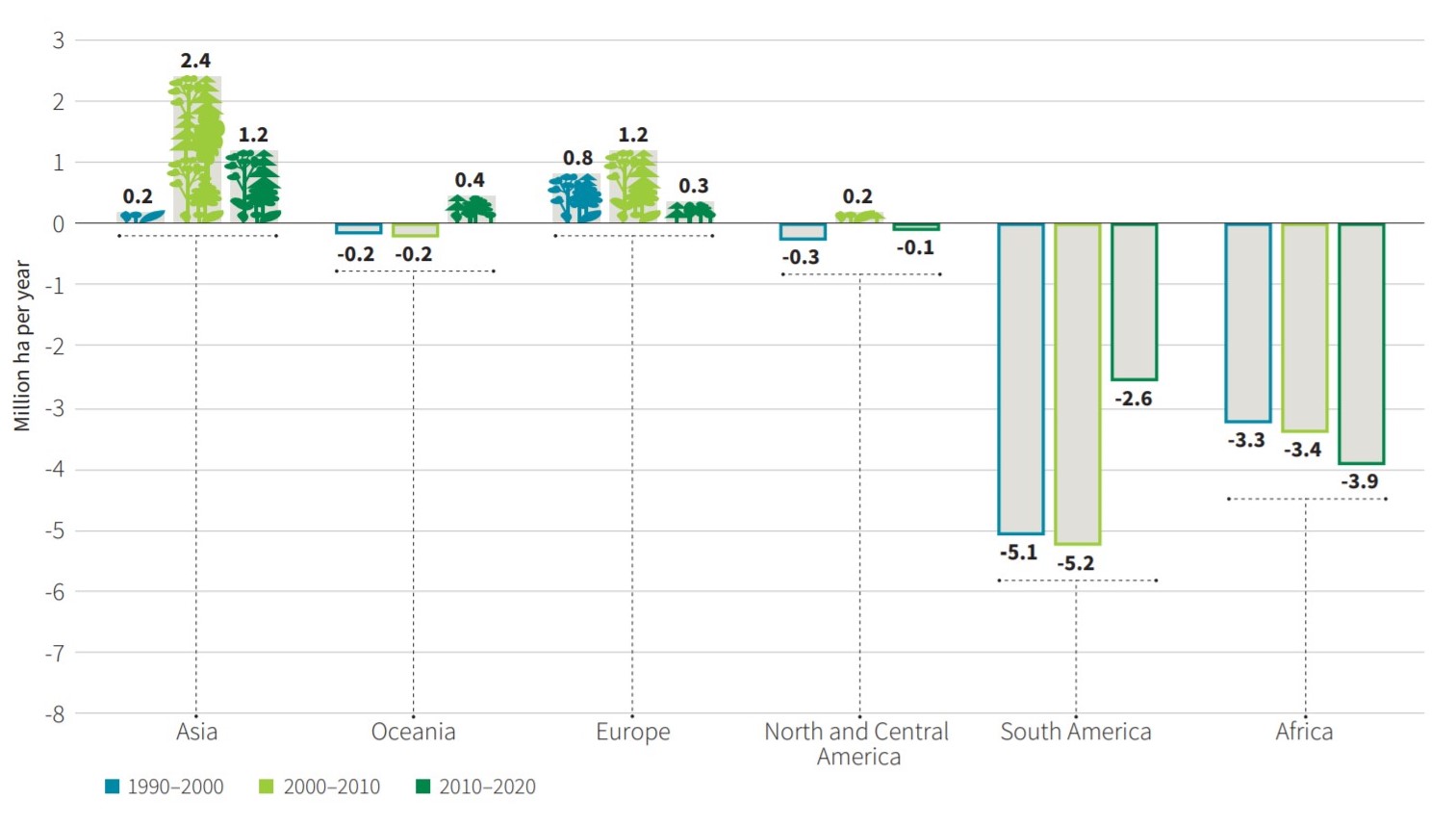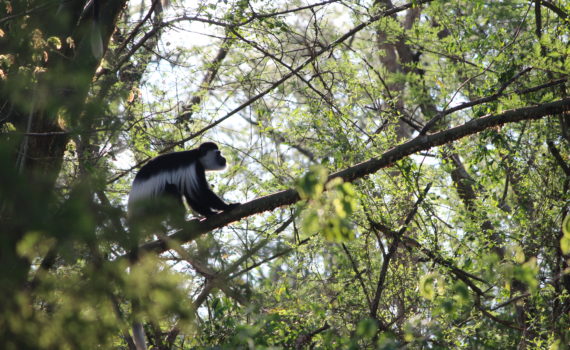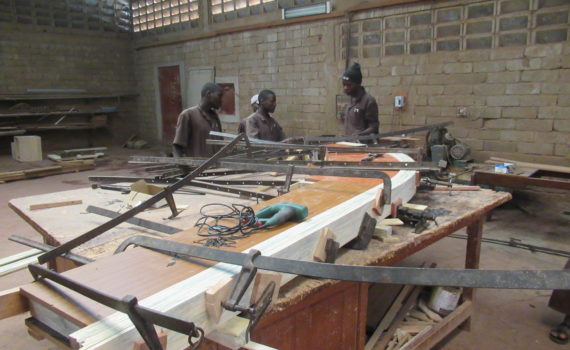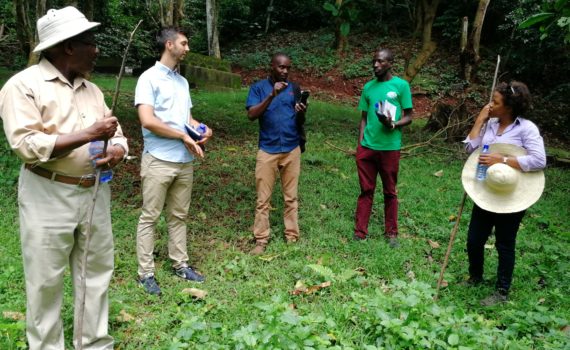Current situation
First of all, the Food and Agriculture Organization’s 2020 report shows that the African continent has the highest annual net rate of forest loss in 2010-2020, at 3.9 million hectares. The rate of net forest loss has increased in Africa in the three decades since 1990.

In 2015, about 98 million hectares of forest were affected by fires; this occurred mainly in the tropical zone, where fires burned about 4 percent of the total forest area that year.
FAO. 2020. Global Forest Resources Assessment 2020 – Key findings. Rome. https://doi.org/10.4060/ca8753en
Lightwood.org focuses mainly on the East African region where Burundi, Kenya, Uganda, Rwanda and Tanzania have committed themselves to the Bonn Challenge. The global target of this challenge is to restore 150 million hectares of degraded and deforested landscapes by 2020 and 350 million hectares by 2030. The Bonn Challenge was launched in 2011 by the German government and IUCN. For these 5 East African countries alone, it represents an ambitious commitment to restore 16.8 million hectares of degraded and deforested landscapes.
In addition, lightwood.org has information from Fairventures professional staff based in Kampala, Uganda. Through awareness raising, enforcement and restoration through natural regeneration as well as planting of different tree species, Uganda has succeeded in increasing its forest cover. For example, this country increased from 9% of the forest area in 2015 to 12.4% in 2019. A proof of the interest and commitment of this country to improve the situation of forests.
How can the “lightwood” help ?
East Africa has experienced very significant deforestation in recent years . Indeed, in this region of the world, the majority of the population is dependent on biomass to meet its energy needs. The need for firewood and charcoal pushes people to obtain wood from natural forests, which are shrinking rapidly. This problem is likely to worsen with population growth in Africa in general. Indeed, Africa’s population almost tripled between 1980 and 2015, from 478 million to 1.2 billion, and this growth will continue to increase over the coming decades. (source: United Nations Economic Commission for Africa, 2016, “Demographic Profile of Africa”).
Lightwood could contribute to mitigate these issues and provide a path forward for rural populations and the regional economy.
Indeed, lightwood has great potential, because by planting trees it is possible to create plantations that are considered carbon sinks. In addition, these plantations have multiple benefits, such as improving soil quality, producing fruit or providing shelter for animals that can take refuge in hot weather. To show the exciting potential, let’s take the example of Uganda, where in 2017, more than 8,079,622 hectares of land were available for restoration.
Secondly, these sustainably managed plantations provide a volume of wood available to meet the demand for fuelwood, thus protecting overexploited natural forests. Finally, one of the most important arguments is that light wood is not only interesting for the energy industry, but also has immense potential for use as a building material and for furniture manufacture. By creating value in the wood material, it not only increases its attractiveness in the market by favouring all players in the value chain, but from an ecological point of view, it also uses the wood material to its full potential. This means carbon sequestration (forest carbon stock), long-term carbon storage (carbon in materials), substitution of materials such as steel or concrete (production emissions) and finally the recycling of a carbon-neutral material (end of life). In this way, it is an opportunity to multiply the impact of climate benefits by 2 or 3 compared to the forest alone.
What is the focus of Fairventures work in East Africa ?
You will find various information about lightwood species, how forests are managed, but also everything there is to know about the various woodworking processes and the products that can be made from lightwood. You can also access the different activities that have taken place in East Africa to promote Lightwood.



